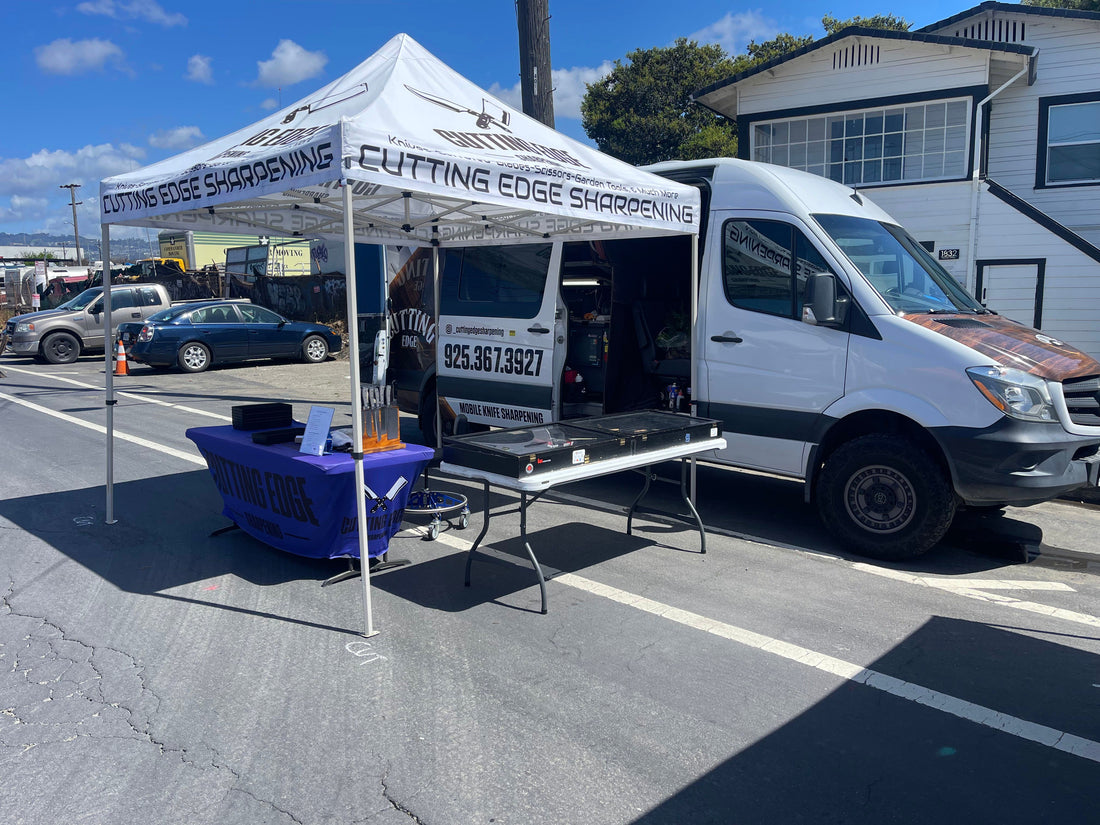
5 Signs Your Knife Needs Sharpening Today
Share
A sharp knife is an essential tool in any kitchen or workspace, ensuring precision, efficiency, and safety. Whether you’re a home cook or a professional chef, a dull blade can turn everyday tasks into frustrating and even dangerous challenges. Recognizing when your knife needs sharpening is crucial to maintaining its performance and extending its lifespan.
In this blog, we’ll explore five unmistakable signs your knife is overdue for sharpening, the risks of using dull blades, and tips for maintaining your knife’s edge.
Why Sharp Knives Matter
Before diving into the signs, it’s important to understand why sharp knives are so critical:
-
Safety: A dull knife requires more force to cut, increasing the risk of slips and injuries.
-
Efficiency: Sharp knives make prep work faster and less tiring.
-
Precision: A sharp blade ensures clean cuts, improving the quality of your work.
-
Longevity: Regular sharpening helps preserve your knife’s edge and extends its life.
Sign 1: Difficulty Cutting Through Food
One of the clearest indicators of a dull knife is its inability to cut through food easily. If you notice the following, your knife likely needs sharpening:
-
Squashed tomatoes: Instead of slicing cleanly, the knife crushes or squashes the fruit.
-
Struggling with meat: A dull blade makes it harder to carve or cut through even tender cuts of meat.
-
Tough on herbs: Instead of a clean chop, herbs may get bruised or torn.
A sharp knife should glide through food effortlessly, preserving its texture and appearance.
Sign 2: Slipping or Skidding While Cutting
A sharp knife grips the surface of food and slices cleanly. A dull blade, however, tends to slip or skid, which can lead to:
-
Increased risk of accidents: When a knife slips, it’s more likely to cause an injury.
-
Uneven cuts: Skidding makes it difficult to achieve uniform slices.
Pro Tip: To test your knife’s sharpness, try slicing into a ripe tomato. A sharp knife will pierce the skin easily, while a dull one may slide off.
Sign 3: Frayed or Torn Edges
The quality of your cuts is a direct reflection of your knife’s sharpness. A dull blade tears through food, leaving frayed or uneven edges. This affects:
-
Presentation: Clean cuts make dishes look more appealing.
-
Cooking consistency: Uneven cuts result in uneven cooking, which can affect the taste and texture of your meals.
Sign 4: Excessive Force is Required
If cutting feels like a workout, your knife is likely dull. Signs include:
-
Fatigue: Dull knives require more effort, leaving you tired after simple tasks.
-
Longer prep times: Chopping and slicing take significantly longer.
Sharp knives make meal prep enjoyable and efficient, saving both time and energy.
Sign 5: Failed Paper Test
The paper test is a simple and effective way to assess your knife’s sharpness:
-
How to do it: Hold a piece of paper upright and attempt to slice through it with your knife.
-
Results: A sharp knife will cut cleanly and effortlessly, while a dull one will tear or struggle to penetrate.
Perform this test regularly to keep tabs on your knife’s condition.
The Risks of Using a Dull Knife
Using a dull knife isn’t just frustrating—it can also be dangerous. Here’s why:
-
Higher risk of injury: Dull blades are more likely to slip, leading to accidental cuts.
-
Wasted ingredients: Tearing or squashing food reduces its usability and appeal.
-
Increased wear and tear: A dull knife requires more force, which can strain the blade and shorten its lifespan.
Benefits of Professional Knife Sharpening
While at-home sharpening tools are useful, professional sharpening offers unparalleled results:
-
Precision: Experts use advanced tools and techniques to achieve factory-level sharpness.
-
Custom care: Different knives require different angles and methods, which professionals can tailor to each blade.
-
Longevity: Professional sharpening removes only the necessary amount of metal, preserving the knife’s integrity.
Our Services: Keeping Your Knives Sharp
At Cutting Edge Knife Sharpening, we offer convenient mail-in and on-site options to suit your needs:
-
Mail-In Knife Sharpening:
-
Simply send your knives via post, and we’ll return them expertly sharpened.
-
Perfect for busy individuals or businesses.
-
On-Site Knife Sharpening:
-
We bring professional tools to your location for quick and efficient sharpening.
-
Ideal for restaurants, food trucks, and industrial kitchens.
Meet Us at the Farmers Market!
Find us at your local farmers market for in-person knife sharpening:
-
West Oakland Farmers Market – Every Sunday, 10:00 AM – 2:00 PM
-
Saratoga Farmers Market – Every Other Saturday, 10:00 AM – 2:00 PM
How to Maintain Sharp Knives Between Sharpenings
Here are some tips to prolong the sharpness of your knives:
-
Use a honing rod: Realign the blade’s edge after each use.
-
Cut on appropriate surfaces: Avoid glass or metal cutting boards; use wood or plastic instead.
-
Store knives properly: Use blade guards or a dedicated knife block to prevent dulling.
Conclusion
A sharp knife is more than a tool—it’s an investment in safety, efficiency, and quality. If your knives show any of the signs mentioned above, it’s time to have them professionally sharpened.
Contact us today at 925-367-3927 to schedule your sharpening service. Or, visit us at the West Oakland Farmers Market or the Saratoga Farmers Market to experience the difference firsthand.
Don’t let dull knives slow you down—sharpen your edge today!
